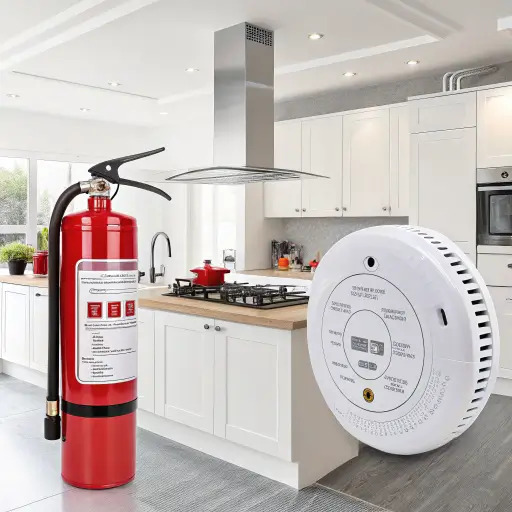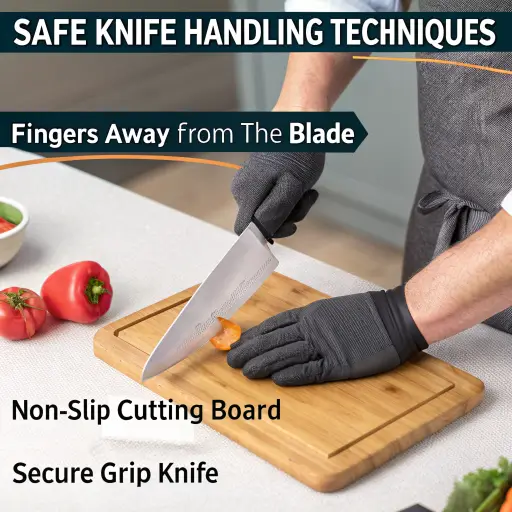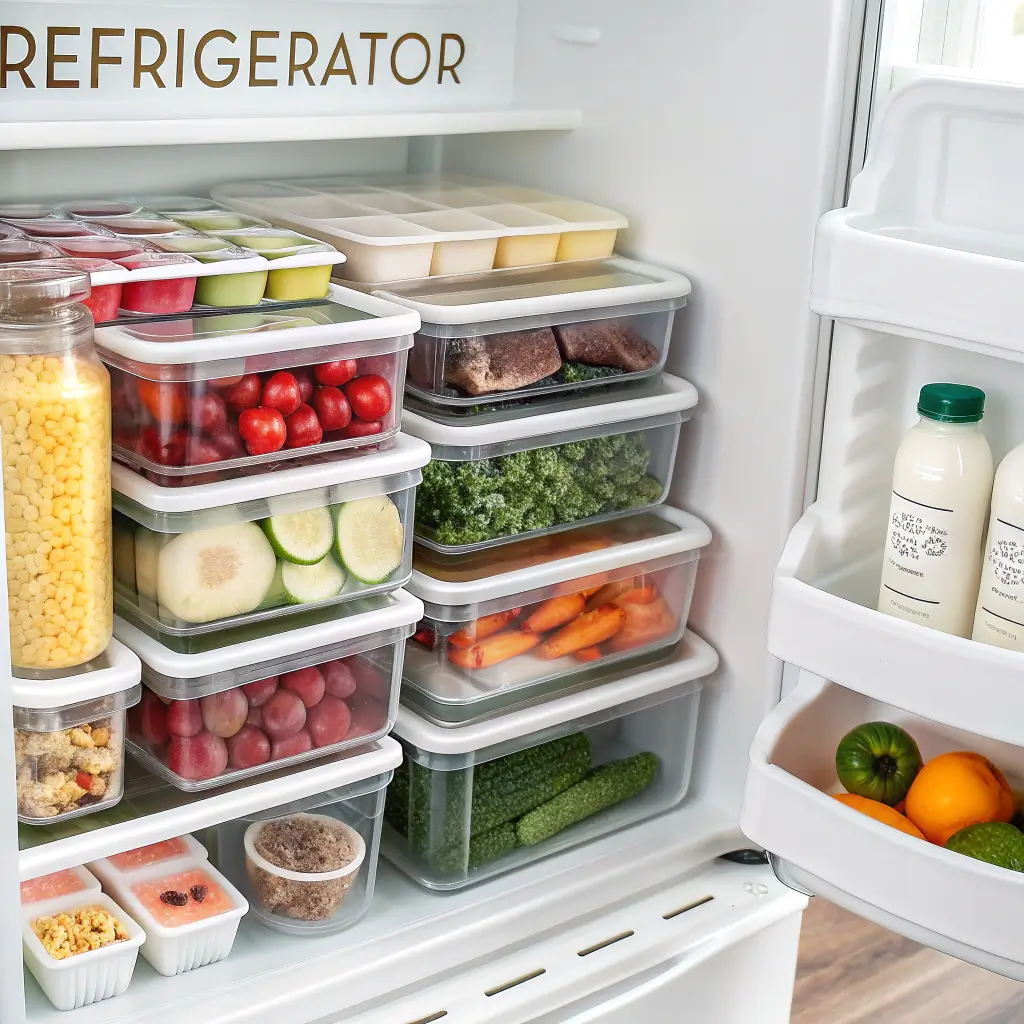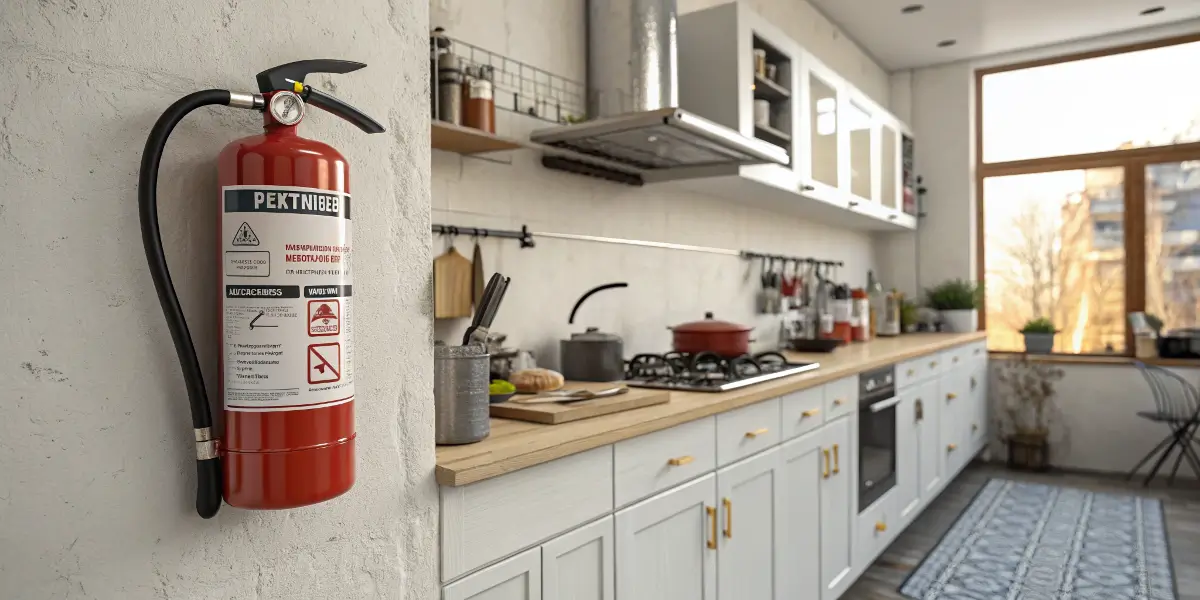Cooking is a rewarding and fulfilling activity that many people love to engage in. Whether you’re whipping up a quick weeknight meal or preparing a festive feast for loved ones, the kitchen is where culinary creativity comes to life. However, as enjoyable as cooking can be, it’s important to remember that the kitchen also comes with potential risks and hazards. From sharp knives to hot stoves, there are various dangers that can lead to accidents or injuries.
Fortunately, cooking safety is something you can actively control, and with the right knowledge and tools, you can create a safe kitchen environment for you and your family. In this guide, we will delve into essential cooking safety tips, focusing on fire safety, preventing cuts and burns, safe food handling, and more. Let’s explore how to stay safe in the kitchen and cook with confidence.
Table of Contents
Fire Safety in the Kitchen
1. Keep a Fire Extinguisher in Your Kitchen
A fire extinguisher is one of the most essential tools for ensuring kitchen safety. Kitchen fires can happen quickly, especially when dealing with hot oil or grease, and a fire extinguisher allows you to act fast before the fire gets out of control. It’s important to have the correct type of fire extinguisher, specifically a Class K fire extinguisher, which is designed for fires involving cooking oils, fats, and grease.
Make sure to familiarize yourself with the proper way to use a fire extinguisher by following the PASS method:
- Pull the pin
- Aim the nozzle at the base of the fire
- Squeeze the handle
- Sweep the nozzle from side to side

Remember to regularly check the fire extinguisher to ensure it is in good working condition and easily accessible in case of an emergency.
2. Install Smoke Detectors
Smoke detectors are another crucial safety measure for preventing fire-related accidents in the kitchen. They serve as an early warning system, alerting you to the presence of smoke or fire. It’s important to install smoke detectors near the kitchen, but not directly above cooking appliances, as this could result in false alarms when you’re cooking.
To ensure they’re working effectively:
- Test the detectors monthly
- Replace the batteries at least once a year
- Regularly clean the detector to avoid dust build-up
By taking these simple precautions, you can significantly reduce the risk of fire-related injuries.
3. Stove and Oven Safety
The stove and oven are some of the most commonly used appliances in the kitchen, and they can also be sources of kitchen fires if not used properly. Here are a few tips to help you use these appliances safely:
- Keep flammable items, like dish towels, paper towels, and wooden spoons, away from heat sources.
- Never leave cooking food unattended, especially when cooking with high heat or when frying.
- Always use the back burners when possible to keep hot pots and pans out of reach of children.
- Clean your stove and oven regularly to remove grease buildup, which can easily catch fire.
By practicing good habits and remaining alert, you can reduce the risk of fire hazards while cooking.
Preventing Cuts and Burns
4. Knife Safety
Knives are indispensable in the kitchen, but they are also one of the most dangerous tools if not used correctly. To reduce the risk of cuts and injuries:

- Use a sharp knife. Dull knives require more force to cut through food, increasing the risk of the knife slipping and causing injury.
- Always use a stable cutting board to provide a safe surface for chopping.
- Keep your knives securely stored. Store them in a knife block or on a magnetic strip to prevent accidental cuts.
- If you are new to using knives or want extra protection, consider cut-resistant gloves.
By following these simple steps, you can prevent accidents and make knife handling safer and more efficient.
5. Handling Hot Surfaces and Pots
Burns are another common kitchen injury, especially when handling hot pots, pans, and surfaces. Here are some tips for staying safe around heat:
- Always use oven mitts or potholders when handling hot items from the stove or oven. Make sure your mitts are dry to avoid steam burns.
- When removing a hot pan from the oven, always place it on a heat-resistant surface to avoid damage to countertops or the risk of burns.
- Be mindful of steam when lifting lids or opening the oven, as it can cause painful burns.
- Teach children to stay away from hot surfaces and never to touch hot cookware.
By adopting these safety habits, you can minimize the risk of burns in the kitchen.
6. Proper Kitchen Ventilation
Proper ventilation is an often overlooked but vital component of kitchen safety. Good ventilation can help prevent heat build-up and reduce the risk of fire. Here’s how you can enhance your kitchen ventilation:
- Use a range hood or exhaust fan to remove smoke, steam, and cooking odors.
- Open windows or use a fan to improve air circulation, particularly when cooking with high heat.
- Regularly clean your range hood and exhaust fan filters to ensure they function efficiently.
Proper ventilation not only improves safety but also makes cooking more comfortable by removing excess heat and odors.
Safe Food Handling Practices
7. Hand Washing
Handwashing is one of the simplest yet most effective ways to prevent foodborne illnesses. Always wash your hands before and after handling food, especially raw meat, poultry, seafood, and eggs. Use soap and water and scrub your hands for at least 20 seconds, paying attention to the areas between your fingers and under your nails. If soap and water aren’t available, use a hand sanitizer that contains at least 60% alcohol as a substitute.
By maintaining proper hand hygiene, you reduce the risk of transferring harmful bacteria to your food.
8. Preventing Cross-Contamination
Cross-contamination occurs when bacteria from raw food, especially raw meat, transfer to other foods, utensils, or surfaces. To prevent this:
- Use separate cutting boards for raw meat and vegetables.
- Sanitize surfaces and utensils thoroughly after using them with raw food.
- Store raw meat, poultry, and seafood in sealed containers on the bottom shelf of the refrigerator to prevent juices from contaminating other foods.
These practices will help you reduce the chances of cross-contamination and ensure safer food preparation.
9. Using a Food Thermometer
A food thermometer is essential for ensuring that food has been cooked to a safe internal temperature. Different foods require different cooking temperatures to kill harmful bacteria. Use a thermometer to check the thickest part of the food, avoiding bones and fat for an accurate reading.
Here are some recommended internal cooking temperatures for various foods:
- Poultry: 165°F (74°C)
- Beef, Pork, and Lamb: 145°F (63°C)
- Ground meats: 160°F (71°C)
Using a thermometer ensures that food is cooked safely and reduces the risk of foodborne illnesses.
Safe Food Storage
10. Refrigerator and Freezer Safety
To keep your food fresh and safe, it’s essential to store it properly in your refrigerator and freezer:

- Set your refrigerator temperature to below 40°F (4°C) and your freezer to 0°F (-18°C) or lower.
- Organize your refrigerator to allow for proper air circulation and avoid overloading it.
- Store raw meat, poultry, and seafood on the bottom shelf to prevent juices from contaminating other foods.
- Clean and defrost your refrigerator and freezer regularly to maintain optimal performance.
These storage practices will help extend the shelf life of your food and reduce the risk of spoilage.
11. Storing Leftovers
Proper storage of leftovers is crucial for preventing bacterial growth and ensuring food safety. Here’s how to do it safely:
- Transfer leftovers to shallow, airtight containers to cool quickly and evenly.
- Label the containers with the date to keep track of freshness.
- Store leftovers in the refrigerator for no longer than 3-4 days or in the freezer for 2-3 months.
- When reheating leftovers, ensure they reach an internal temperature of 165°F (74°C) to kill any bacteria.
Following these guidelines helps prevent foodborne illnesses and ensures your leftovers stay safe to eat.
12. Avoiding Foodborne Illnesses
Preventing foodborne illnesses isn’t just about cooking food properly; safe food storage also plays a key role:
- Always check expiration dates and discard any food that appears spoiled or has an unusual odor or color.
- Never thaw frozen food by leaving it out at room temperature. Instead, thaw it in the refrigerator, microwave, or in cold water.
These food safety practices can greatly reduce your risk of foodborne illness.
General Kitchen Safety Tips
13. Electrical Safety in the Kitchen
Electrical appliances are an integral part of modern kitchens, but they can be dangerous if not used properly. Keep these safety tips in mind:
- Avoid overloading electrical outlets and always use only one high-wattage appliance per outlet.
- Regularly inspect the cords of electrical appliances for signs of wear or damage.
- Keep electrical appliances away from water to prevent electrical shock.
- Unplug appliances when not in use and ensure they are turned off before cleaning.
By following these safety precautions, you can help prevent electrical accidents in your kitchen.
14. Child Safety in the Kitchen
The kitchen can be a dangerous place for children if proper precautions aren’t taken. Ensure their
safety by:
- Keeping sharp objects, hot items, and heavy cookware out of reach.
- Installing safety gates to keep young children out of the kitchen.
- Teaching children basic kitchen safety rules, such as not touching hot surfaces and asking for help with cooking.
By making the kitchen a child-friendly environment, you can prevent accidents and teach them valuable safety habits.
Conclusion
Safety in the kitchen should never be taken for granted. By following the guidelines we’ve discussed, you can significantly reduce the risk of accidents and create a safe cooking environment for yourself and others. From fire safety and knife handling to food storage and electrical precautions, being mindful of these practices will allow you to cook with confidence while minimizing potential hazards. Always remember, a safe kitchen is a productive kitchen, and your health and well-being should always be your top priority.
Here’s a section with 5 unique FAQs that you can include at the end of your article:
FAQs
What is the most important kitchen safety tip for preventing accidents?
The most important kitchen safety tip is to always stay alert and never leave cooking food unattended, especially when using high heat or frying. Ensuring that you have a fire extinguisher, smoke detectors, and practicing proper food handling and knife safety are also crucial.
How can I prevent kitchen fires when frying food?
To prevent kitchen fires while frying, always use a thermometer to monitor the temperature of the oil, and never leave it unattended. Keep flammable objects away from the stovetop, and use a deep pan with a lid. In case of a grease fire, never use water—use a Class K fire extinguisher or cover the pan with a lid to smother the flames.
Is it necessary to wash my hands after handling raw meat?
Yes, washing your hands after handling raw meat is essential for preventing the spread of harmful bacteria. Always wash your hands with soap and water for at least 20 seconds, and sanitize any surfaces or utensils that have come into contact with raw meat to avoid cross-contamination.
Can I store raw meat with other foods in the refrigerator?
No, raw meat should always be stored separately from other foods in the refrigerator. To avoid cross-contamination, keep raw meat in sealed containers on the bottom shelf of the fridge to prevent its juices from dripping onto other foods.
How often should I test my smoke detector?
It is recommended to test your smoke detector at least once a month to ensure it is working properly. You should also replace the batteries at least once a year, or if the detector starts beeping to indicate low battery levels.


1 thought on “Essential Cooking Safety Tips: How To Prevent Accidents In The Kitchen”